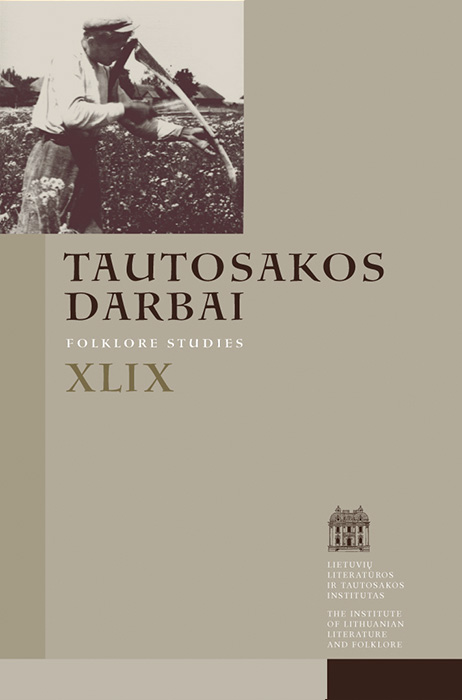Mitiniai vaizdiniai Donelaičio „Metuose“: žolė
Santrauka
Lietuvių tautosakos, o kartu ir mitologijos atspindžius Kristijono Donelaičio „Metuose“, be vienos kitos pastabos įvairių autorių darbuose, nuosekliau yra nagrinėję bent trys žymūs lietuvių tautosakininkai: Zenonas Slaviūnas, Ambraziejus Jonynas ir Stasys Skrodenis. Jau bandė šiuo klausimu pasisakyti ir šio straipsnio autorius. Ir vis dar yra ką pridurti. Šįkart panagrinėsime „Metuose“, esmiškai antrojoje dalyje „Vasaros darbai“, išryškėjančią savotišką „žolės mitologiją“ – alegorinius, simbolinius ir tiesiog mitinius su žole (pieva, pjūtimi ir t. t.) susijusius tradicinius vaizdinius: pirmiausia, žmogaus – augalo žiedo (pumpuro, vaisiaus) metafora, paskui atitinkamas suasmenintos mirties (Giltinės) su dalgiu vaizdinys, paskui karo – pjūties ir pjūties – karo analogijos ir galiausiai žolės, pievos kaip barzdos įvaizdis.
Atsisiuntimai
Skaitomiausi šio autoriaus(ų) straipsniai
- Vida Norvaišienė, Dainius Razauskas, Rūta Žarskienė, Vita Ivanauskaitė-Šeibutienė, Lina Būgienė, Kronika , Tautosakos darbai: T 49 (2015)
- Dainius Razauskas, Medžių lytys ir jų santykiai: žingsnis į dendromitologiją , Tautosakos darbai: T 52 (2016)
- Daiva Vaitkevičienė, Dainius Razauskas, Būti mitologu – su širdimi ir iš širdies. Daivos Vaitkevičienės pokalbis su Dainiumi Razausku , Tautosakos darbai: T 60 (2020)
- Dainius Razauskas, Sveikiname Profesorę! Tatjanai Civjan – 80 , Tautosakos darbai: T 53 (2017)
